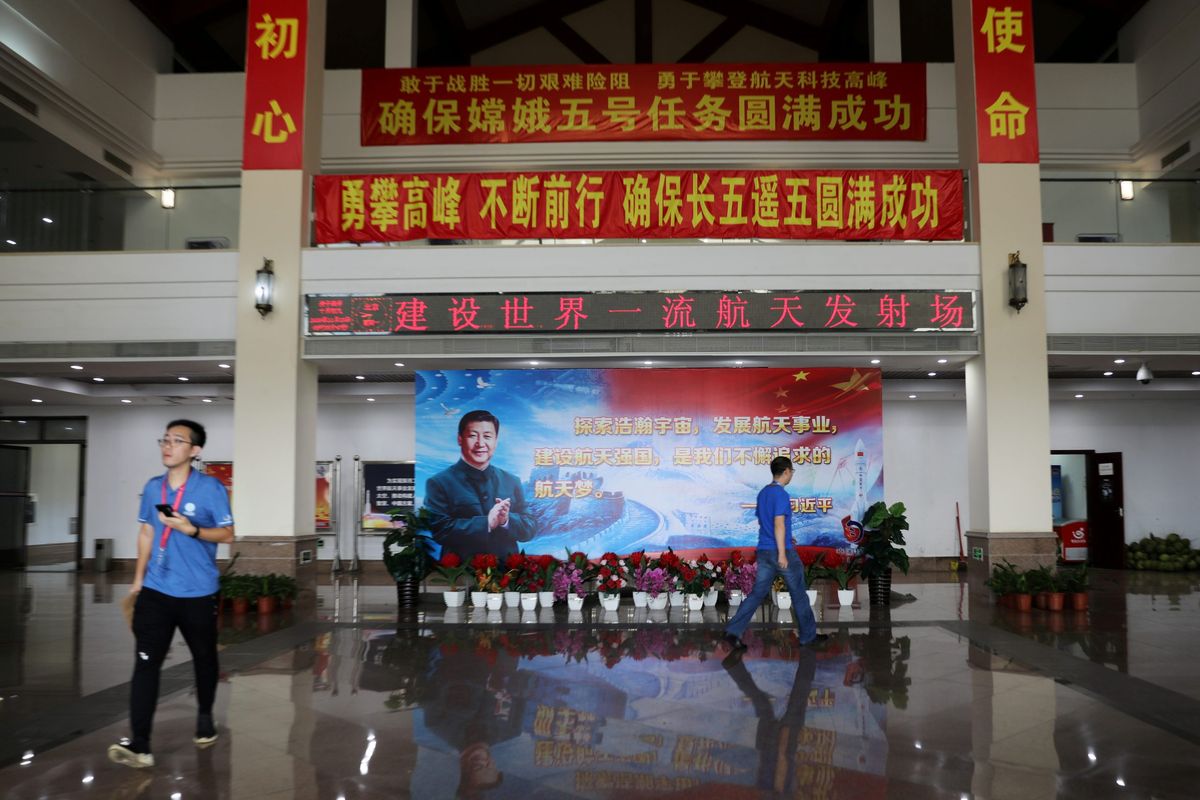China’s ambitions in space, explained

A few minutes every morning is all you need.
Stay up to date on the world's Headlines and Human Stories. It's fun, it's factual, it's fluff-free.
Most of China’s ambitions in space are peaceful and interwoven with patriotism, like those of the Americans decades ago. The Irony is that in trying to counter Chinese cosmic ambitions, the US may have incentivized Beijing’s space program.
The Gobi Desert in China is an ideal place for prospective Martians. Here, along the ragged red landscape, is Mars Base 1, a mock Martian station, where uniformed schoolchildren are led by a spacesuit-clad tour guide to learn about what life in a space colony could be like.
The station serves to ignite the imaginations of Chinese children who will one day lead the People’s Republic. But Beijing has more in mind with this project than the intrinsic pursuit of knowledge: it is thinking about its national pride.
Cold War origins
For decades, space was the ultimate battleground between the United States and the Soviet Union. The launch of the Soviet satellite Sputnik wounded America’s ego, as many Americans had long assumed that American capitalism and democracy would automatically result in the country’s technological superiority as well. That the Soviets then became the first nation to launch a man into space only deepened the wound.
Like the People’s Republic of China (PRC) decades later, Americans began to believe that aspirations toward the stars were intertwined with national destiny. The space race that began when the USSR launched a satellite above the Earth ultimately ended with American astronauts planting the American flag on the moon.
The final frontier club
Since then, multiple nations have made their way to the final frontier. Even Bangladesh and Nigeria have a few satellites in orbit, though those few are dwarfed by the more than 800 American satellites also circling Earth.
Most countries’ attempts at space exploration have been peaceful, but, like nearly every breakthrough in technology, a military application was found. This was first realized in the Cold War, where antisatellite missiles were first developed and the Reagan-era “Star Wars” program was dreamed up, but warfare hadn’t begun to reach maturity until recently. China is responsible for reminding the world that a new era of warfare had begun.
In 2007, China destroyed one of their satellites. The test, analyzing antisatellite capabilities, saw the launch of a missile toward a weather satellite, which resulted in the latter’s obliteration. Beijing first denied its role, but then later admitted to the test, claiming that the US and Japan had been warned.
2007 might as well have been a century ago in Sino-American relations, but the event foreshadowed what was to come between China and America. The problem with the 2007 missile test is that by annihilating that satellite, China created thousands of pieces of debris that now orbit Earth. Such debris is a severe threat to the International Space Station (ISS) as well as other satellites and astronauts leaving Earth’s atmosphere.
China’s space strategy
For Beijing, destroying American, satellites is an integral part of military strategy and is at the core of the Chinese military’s role in space. Every war is an asymmetric war when the enemy is the US and part of China’s strategy is to handicap American communications by destroying American satellites. This can deprive the US of vital information in the event of a Chinese invasion of Taiwan, where speed and blocking information that can be gathered by a satellite might determine whether America intervenes in defense of Taiwan.
In 2015, Beijing formed a new military branch, the People’s Liberation Army Strategic Support Force, which focuses on space, cyber and electronic warfare. It was thanks to advancements like these that American lawmakers were drawn into creating the Space Force, a move that China subsequently condemned.
Now, more than 13 years after the 2007 test, Chinese astronauts have been banned from the ISS and from cooperating on American space flights due to what the US has dubbed “national security concerns.”
Despite tests like the 2007 missile tests, most of China’s ambitions in space are peaceful and interwoven with patriotism, like those of the Americans decades ago. The Irony is that in trying to counter Chinese cosmic ambitions, the US may have incentivized Beijing’s space program.
A rising astro-power
China has become the second-largest spender on space exploration (the US is the first) and, starting in 2018, now leads the world in rocket launches annually. To reconcile with the loss of access to the ISS, the Chinese are building their own space station – a program that the European Union has already shown interest in participating in. The PRC has even taken notice of private space exploration companies like SpaceX and Blue Orbit and is working with private Chinese space companies.
While the US may have been the first country to land astronauts on the moon, China was the first nation to explore the dark side of the moon. The lunar aspirations of the PRC range from landing Chinese astronauts on the moon to creating a lunar space station that will serve as a refueling base for extraterrestrial missions not only for China, but for other nations willing to pay to use the lunar gas station.
But China’s ambitions stretch beyond the moon. Like the US, China is determined to be the first country to land humans on Mars. As of this writing, a Mars rover is rocketing toward that planet and is expected to land in February 2021, northwest of where the American Viking 2 rover landed in 2018.
Back in the Gobi
But while rovers are in the present, human Martians are in the future. Back in the station at Mars-on-the-Gobi, Chinese children spoke of their, and China’s, aspirations toward space. When asked, a Chinese student referenced furthering China’s destiny as a motivation for space exploration.
This does not appear to be an anecdote: a recent study found that more than half of Chinese children aspire to be an astronaut over any other profession.
Have a tip or story? Get in touch with our reporters at tips@themilsource.com




Comments ()